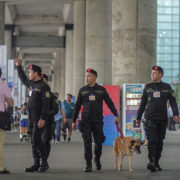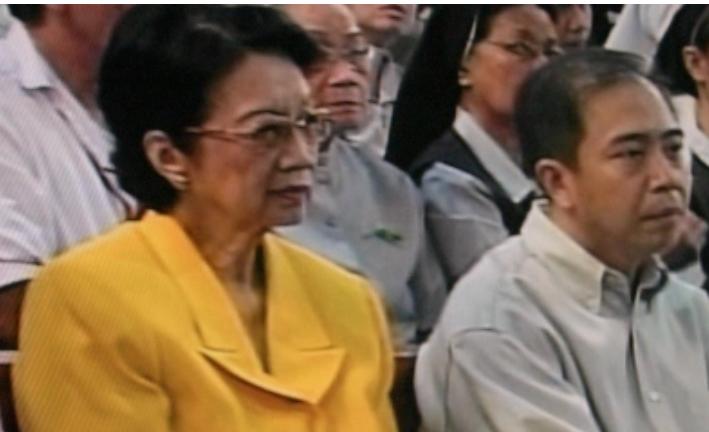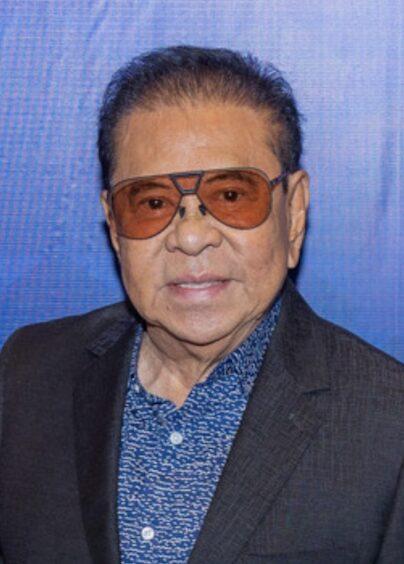
Malacañang said on Friday, December 28 that the Philippine government is prioritizing the implementation of tougher security measures after the U.S. Department of Homeland Security (DHS) announced that aviation security at Manila’s Ninoy Aquino International Airport (NAIA) was not up to par with international security standards.
Philippine Presidential Spokesperson Salvador Panelo said on Friday that “ensuring the safety of the traveling public is one of the critical interests of our government in view of the looming threat of terrorism.”
“We assure everyone that the Philippine government, through the Department of Transportation (DOTr), the Manila International Airport Authority (MIAA), and the Office for Transportation Security (OTS), is prioritizing the implementation of strict security measures at the Ninoy Aquino International Airport,” added Panelo.
Panelo also alluded to the notorious “tanim bala” schemes, which involved airport security personnel planting illegal ammunition in unsuspecting passengers’ luggages for extortion, and declared them “a thing of the past.”
“We thus laud the existing efforts of our various officials in the transport industry who have tirelessly made sure that our passengers reach their destinations from our transit stations safely and efficiently,” he said.
In a statement on Wednesday, December 26, the DHS said that “Aviation security at Ninoy Aquino International Airport (MNL), which serves as a last-point-of-departure airport for flights to the United States, does not maintain and carry out effective security consistent with the security standards established by the International Civil Aviation Organization (ICAO).”
The DHS’ determination was based off assessments carried out by Transportation Security Administration (TSA) security experts.
Airlines issuing tickets for travel between the U.S. and NAIA were immediately directed to notify passengers in writing of the determination. All U.S. airports offering regular flights to Manila were also directed to prominently display the advisory, which was also published in the Federal Register.
MIAA says no reason to be alarmed
On Thursday, MIAA said that the agency had acknowledged the TSA’s concerns and said that there was “no cause for alarm.”
“All points raised by the Transportation Security Administration (TSA) auditors have either been addressed or are in the process of being addressed. There’s no cause for alarm given as we put in place security enhancements following the recommendations of the U.S. TSA,” said MIAA General Manager Ed Monreal during a Thursday press conference.
Monreal also urged passengers to cooperate with the ongoing security improvements and to “submit themselves to security inspections when warranted.”
“Standards are there so the global aviation community will have a common reference point, and it is highly important that our aviation security protocols in NAIA meet if not exceed. This is our obligation, and shall remain our commitment to the traveling public,” he added.
U.S Ambassador to the Philippines Sung Kim said in a Thursday statement that the U.S. was working closely with the Philippines’ Department of Transportation (DOTr) and related agencies.
He added that they “have every confidence in their leadership and their commitment to improve aviation security.”
“Philippines authorities have worked diligently to improve security measures and we fully expect that they will soon meet ICAO security standards,” said Kim.
Kim also said that the U.S. State Department had approved $5 million to go towards airport security improvements at NAIA in both technology and training.
Security improvements
The DOTr said on Wednesday that the installation of new security equipment such as X-ray machines, walk through metal detectors, and alarm systems were among the given TSA recommendations. The equipment, it added, are expected to be installed and used by the second quarter of 2019.
The department also said that direct instructions to carry out manual interventions such as the hiring of additional 24/7 MIAA-contracted guards were given in the meantime.
New background check procedures for newly hired airport personnel, a change in “security culture” among longtime NAIA personnel, and the submission of National Bureau of Investigation (NBI) clearances for all MIAA access pass holders, were also among other TSA recommendations.
“In this regard, re-trainings have been, and continue to be conducted to instill in every personnel [the] need to be consistent in every aspect of security,” the DOTr said.
Last week, Monreal told the Philippine government’s official news agency that management had already started security system improvements such as replacing single view X-ray machines with double view X-ray machines to comply with current international aviation standards.
Also last week, Immigration Port Operations Division chief Grifton Medina said that numerous electronic gates — meant to reduce long queues at immigration counters — were installed in NAIA and other major Philippine airports in Cebu, Clark, and Davao this year.
In the Wednesday statement following the U.S.’ determination, the Philippine DOTr said it was fully committed to improving NAIA.
“Rest assured that the government, the DOTr, the MIAA, and the OTS are fully committed in employing all measures available to ensure the security and safety of the traveling public,” said the DOTr.
Panelo on Friday said the government remains “fully committed in our continuing efforts to enhance and secure our airports and eventually protect and ensure the safety of travelers.”







